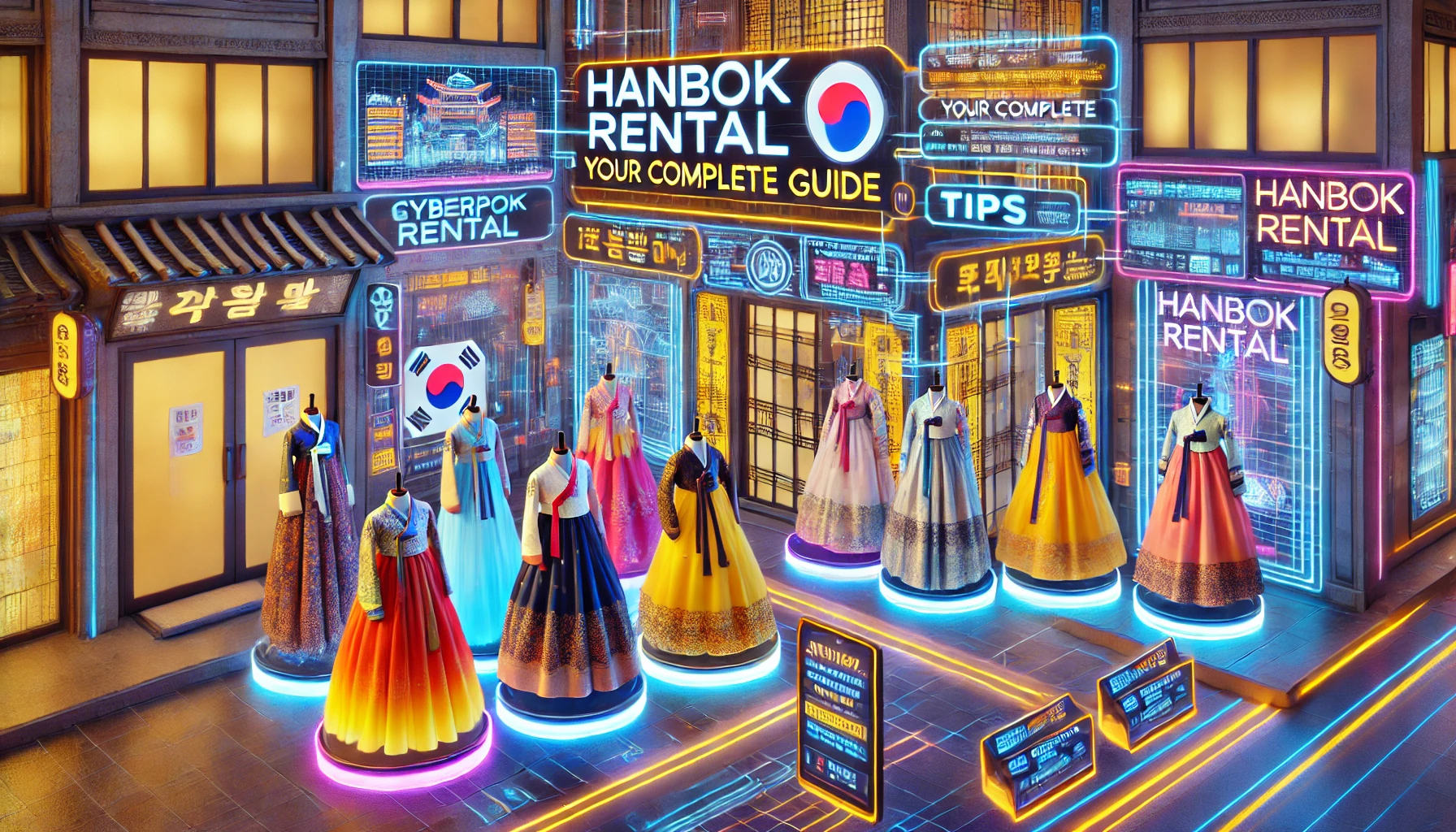Renting a Hanbok, the elegant and flowing traditional Korean dress, is a must-do activity for anyone visiting Seoul. Stepping into a Hanbok is not just about fashion; it’s about fully immersing yourself in the rich cultural history of Korea. Whether you’re planning to stroll through the grand courtyards of Gyeongbokgung Palace, wander around the picturesque Bukchon Hanok Village, or take in the beauty of Changdeokgung, dressing in a Hanbok elevates your experience and makes it even more memorable. This step-by-step guide will walk you through the Hanbok rental process so that you can enjoy an unforgettable and authentic Korean adventure.
Hanbok rental is not only popular among tourists but also embraced by locals who often wear traditional Hanbok during special occasions such as holidays and weddings. This combination of cultural heritage and modern accessibility makes renting a Hanbok in Seoul a unique way to engage with Korea’s living traditions.
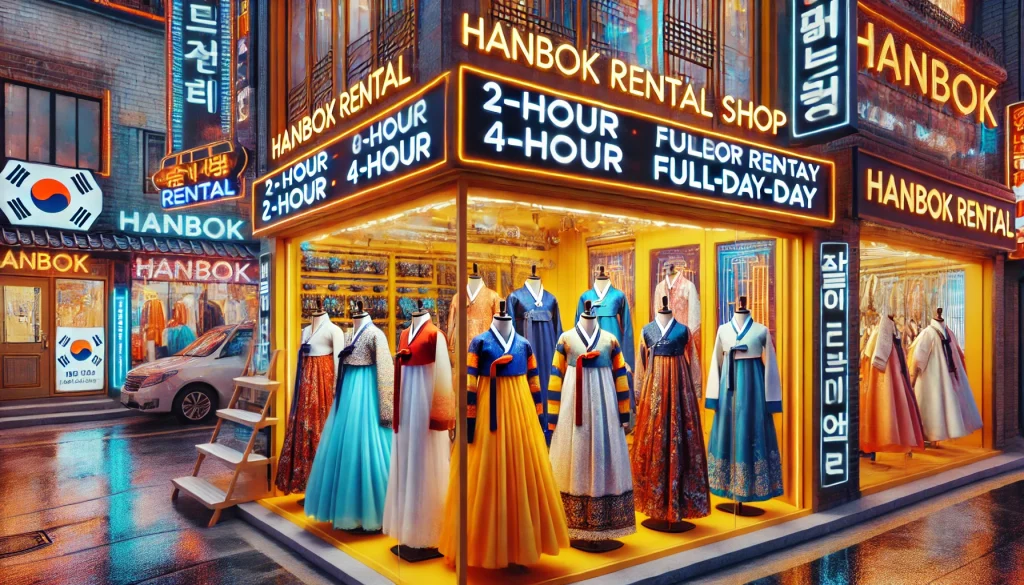
Materials or Tools Needed for Hanbok Rental
Before diving into the rental process, make sure you have the essentials ready to ensure a seamless experience. Here’s a quick breakdown of what you’ll need for a Hanbok rental:
| Materials/Tools | Description |
|---|---|
| Identification (ID/Passport) | Required for Hanbok rental shops to verify identity |
| Cash or Credit Card | Payment for your Hanbok rental, varies by shop |
| Comfortable Shoes | Optional, depending on how much walking you plan |
| Reservation (optional) | Suggested during peak seasons for quick service |
| Smartphone/Map | To navigate the best Hanbok rental shops in Seoul |
Step-by-Step Instructions for Hanbok Rental
Step 1: Research Hanbok Rental Shops

The first step in renting a Hanbok is choosing the right rental shop. In Seoul, most Hanbok rental shops are strategically located near historical landmarks like Gyeongbokgung Palace, Changdeokgung Palace, and Bukchon Hanok Village. This makes it convenient for visitors to rent a traditional Hanbok and explore Seoul’s top attractions without the need to travel far.
- Top Areas for Hanbok Rentals:
- Gyeongbokgung Palace: The largest palace in Seoul, it is a top destination for those in Hanbok. Many shops around the area offer discounts or free entry to the palace if you’re wearing a Hanbok.
- Bukchon Hanok Village: Famous for its beautiful traditional Korean houses, this area provides a stunning backdrop for photos while wearing a Hanbok.
- Insadong: Known for its arts and crafts, Insadong has numerous Hanbok rental shops that cater to tourists looking for an authentic cultural experience.
- Tip: Many shops in these areas offer group discounts, so if you’re traveling with friends, renting as a group can be more affordable.
Step 2: Choose Your Hanbok Rental Duration

Most Hanbok rental shops offer flexible rental periods that range from 1 hour to an entire day. The typical rental duration options include:
- 2-Hour Rental: Ideal if you’re only visiting a specific location such as Gyeongbokgung Palace or want to snap some photos quickly.
- 4-Hour Rental: This option allows you to explore multiple locations while dressed in a traditional Hanbok without feeling rushed.
- Full-Day Rental: If you plan on visiting several attractions or want to take your time exploring Seoul’s cultural sites, a full-day rental is a great choice.
- Pro Tip: A 4-hour rent is the perfect balance for visiting palaces, taking photos, and experiencing Seoul’s heritage comfortably.
Step 3: Select Your Hanbok Style
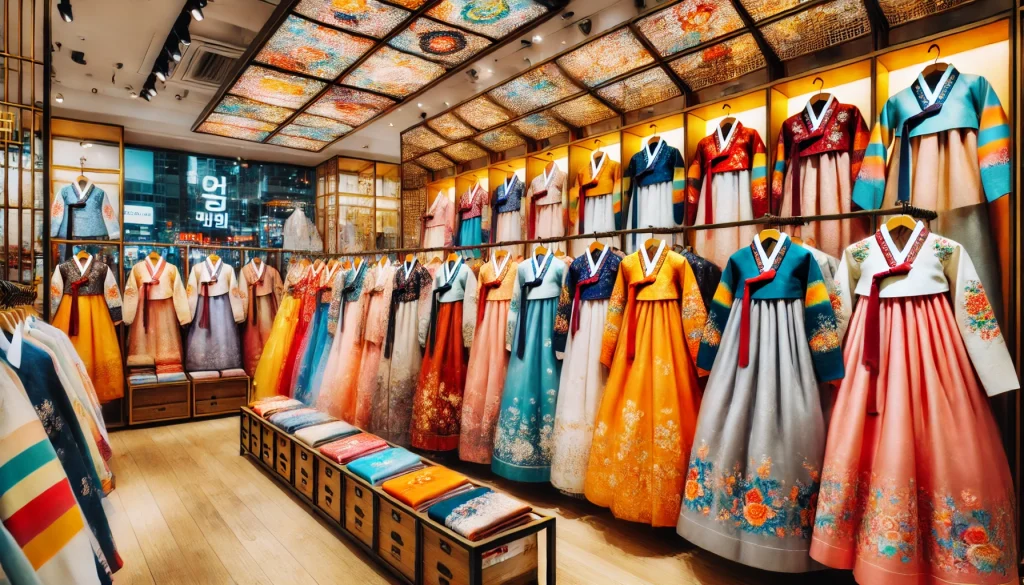
Once you’ve arrived at the Hanbok rental shop, the next step is choosing your Hanbok. Shops offer a wide variety of Hanbok styles, ranging from traditional to modern. Traditional Hanbok consists of a jeogori (jacket) and chima (skirt) for women, or baji (pants) for men. The bright colors and flowing fabric make it an eye-catching outfit.
- Traditional Hanbok: Opt for a classic look with simple yet elegant designs and muted colors. These are often worn during important holidays and events in Korea.
- Modern Hanbok: If you’re looking for something more colorful and trendy, many shops offer modernized versions of Hanbok with contemporary patterns and vibrant shades.
- Fun Fact: In addition to your Hanbok, many shops offer accessories such as binyeo (traditional hairpins) and Korean-style hair braiding services to complete your look.
Step 4: Get Dressed and Styled
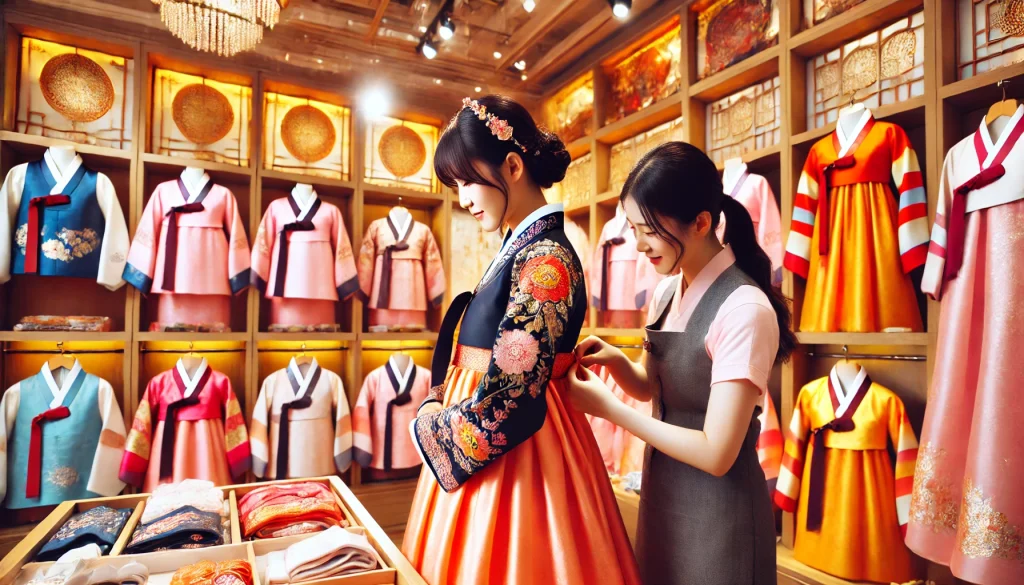
After selecting your Hanbok, the rental shop staff will help you put it on. Hanbok is layered and tied in a specific way to ensure it fits comfortably and looks beautiful. Some rental shops also offer hairstyling services, where staff can arrange your hair into a traditional style to complement the Hanbok.
- Tip: Wear light clothing underneath your Hanbok to stay comfortable, especially if you’re renting during the warmer months.
- Did You Know?: Many Hanbok rental shops offer an option for professional photoshoots. For an additional fee, a photographer can take high-quality photos of you in your Hanbok at nearby scenic locations.
Step 5: Explore Seoul in Your Hanbok
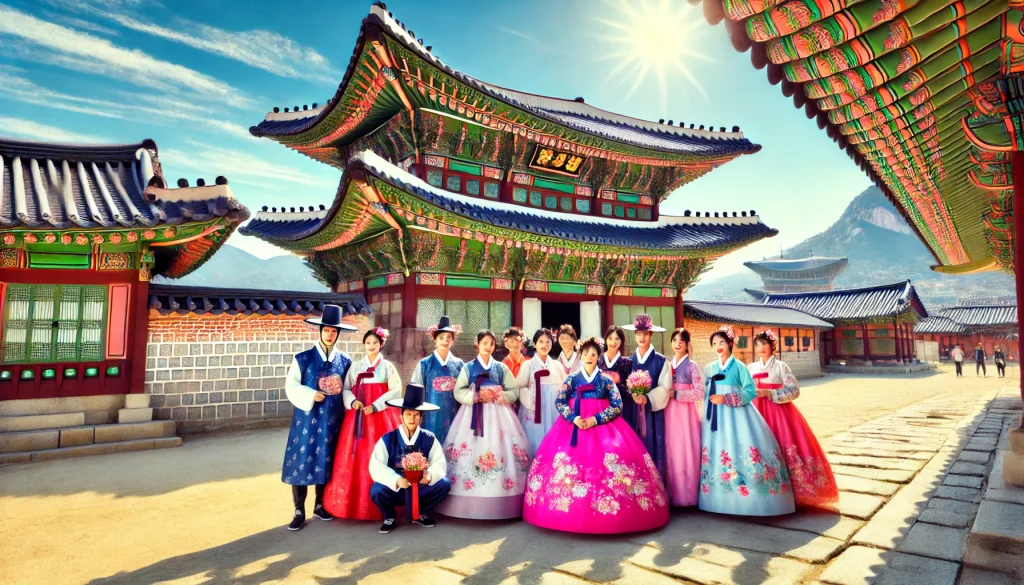
Now that you’re dressed in your Hanbok, it’s time to explore! The best part of wearing a Hanbok in Seoul is the access it gives you to various historical landmarks. In fact, many cultural sites such as Gyeongbokgung Palace, Changdeokgung Palace, and Deoksugung Palace offer discounted or free entry to visitors wearing a Hanbok.
- Recommended Hanbok Experiences:
- Gyeongbokgung Palace: With its grand courtyards and beautiful architecture, this is the most popular spot for Hanbok-wearing tourists. The palace also hosts a changing of the guard ceremony that makes for great photos.
- Bukchon Hanok Village: Wander through this traditional village, known for its preserved Korean houses, and take photos against the backdrop of ancient architecture.
- Insadong: Explore this cultural district while dressed in your Hanbok and enjoy the numerous tea houses, art galleries, and souvenir shops.
- Quick Tip: Bring a bag for your belongings, as most Hanbok rental shops provide lockers, but carrying smaller items might still be useful during your exploration.
Step 6: Return Your Hanbok
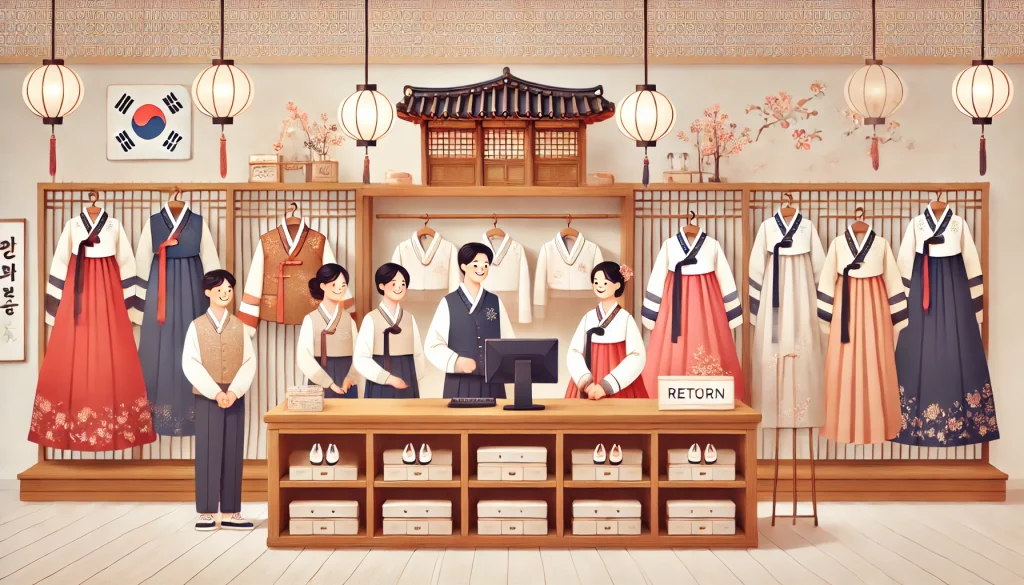
After enjoying your day in Seoul, return to the Hanbok rental shop to drop off your Hanbok. Be sure to return the garment on time to avoid any late fees. Some shops may allow extensions, but this varies, so check the rental policy before you leave. rental shop at the agreed-upon time. Make sure to check the shop’s policies on late returns to avoid any additional fees.
Tips and Warnings for Hanbok Rental
To make your Hanbok rental experience as smooth as possible, here are a few tips and warnings to keep in mind:
| Do’s | Don’ts |
|---|---|
| Visit the rental shop early in the day to avoid crowds | Avoid wearing too many layers under the Hanbok as it can become uncomfortable |
| Some shops allow in-store photography | Be aware of return deadlines to avoid late fees |
| Look for packages that include hairstyling | Don’t forget to bring valid ID for the rental |
| Explore local landmarks for the best photos | Be mindful of busy tourist seasons, when rental demand is high |
Conclusion
Renting a Hanbok in Seoul is a wonderful way to engage with Korea’s traditional culture while creating lasting memories. Whether you’re visiting historic palaces or taking a stroll through Bukchon Hanok Village, the Hanbok rental process is easy and affordable. From selecting your perfect Hanbok to capturing Instagram-worthy photos, this experience allows you to immerse yourself in Korea’s rich history. By following this step-by-step guide, you’ll be able to navigate the process effortlessly and enjoy an authentic, enriching cultural adventure.
FAQs
How much does Hanbok rental cost in Seoul?
The cost of renting a Hanbok varies by location and duration. Prices typically range from 15,000 to 40,000 KRW for rentals lasting between 2 and 24 hours.
Do I need to make a reservation for Hanbok rental?
Reservations aren’t always necessary but are recommended during busy periods like spring and autumn. Some shops offer online reservations with discounts, so it’s worth checking in advance.
Can I rent a Hanbok near Gyeongbokgung Palace?
Yes! There are many Hanbok rental shops near Gyeongbokgung Palace. Renting from one of these locations makes it easy to explore the palace while dressed in traditional attire.
Resources
- I Am Aileen. Find detailed insights on Hanbok rentals in Seoul.
- Gina Bear’s Blog. Learn how to make the most of your Hanbok experience.
- Le Wild Explorer. Discover Seoul’s best spots for Hanbok rentals and photography.
- YouTube – Gina Bear. Watch a video tutorial on renting Hanboks in Seoul.
- The Whole World is a Playground. Explore more about Korean traditions and where to rent Hanbok.

